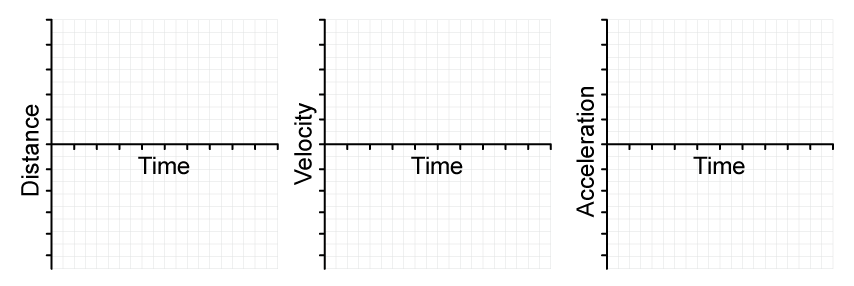State the difference between
(i) distance and displacement,
[2]
(ii) speed and velocity.
[2]
Complete the table in Table 1.1 to describe the features of displacement-time, velocity-time and acceleration-time graphs represent.
Place a cross (✘) in any grid space which does not represent anything. Some grid spaces have been completed for you.
Table 1.1
| displacement-time | velocity-time | acceleration-time |
gradient represents |
|
| ✘ |
area under curve represents |
|
|
|
y-intercept represents |
|
|
|
horizontal line represents | zero velocity |
|
|
straight section represents |
|
|
|
curved section represents |
| non-uniform acceleration |
|
On Fig. 1.2, sketch the variation of time with distance, velocity, and acceleration for an object moving with constant velocity.
Take the initial position to be zero.

Fig. 1.2
On Fig. 1.3, sketch the variation of time with distance, velocity, and acceleration for an object moving with uniform acceleration.
Take the initial position to be zero.

Fig. 1.3
Did this page help you?















